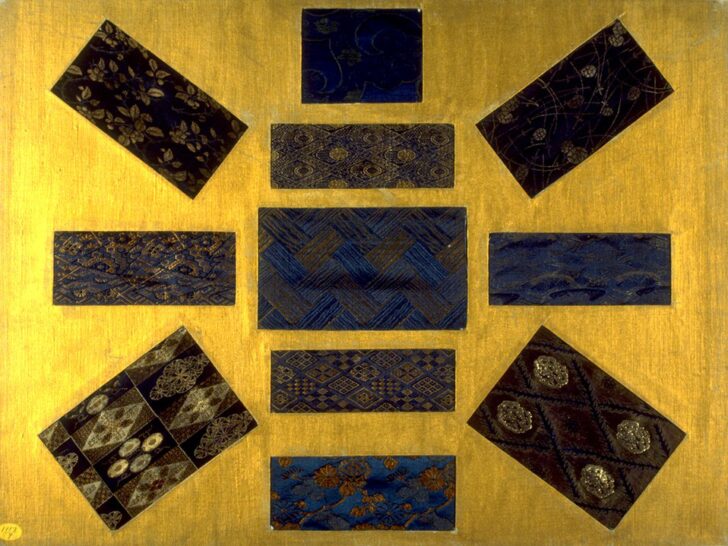One of Four Panels of Textile Fragments: Indigo Brocades
Japanese

Description
Panel of textile fragments: indigo brocades
Japan, late Meiji Period (1868–1912) to
Taishô Period (1912–1926)
Silk brocade (nishiki)
Transfer from the College of Architecture and Design, 1972/2.44.3
Textiles have been collected, catalogued, and discussed in Japan since at least the tenth century. For the imperial court and Buddhist temples, both deeply conservative organizations, textiles were tangible records of precedent: it was important to keep track of what patterns and which colors were appropriate for hundreds of annual ceremonial occasions. Scraps of fabric from garments, banners, monastic robes, and sutra covers were carefully labeled and preserved in thick notebooks.
These four panels of textile fragments featuring a variety of indigo-dyed twill silks and brocades were mounted by a modern Japanese collector and later purchased by an American industrialist and art patron in the heyday of the Art Deco movement, when Japanese design was very much in vogue. A sense of play is evident in the selection and arrangement of the pieces: the cut-out shapes, for example, take into account the patterns in the fabric.
Subject Matter:
Textiles have been collected, catalogued, and discussed in Japan since at least the tenth century. For the imperial court and Buddhist temples, both deeply conservative organizations, textiles were tangible records of precedent: it was important to keep track of what patterns and which colors were appropriate for hundreds of annual ceremonial occasions. Scraps of fabric from garments, banners, monastic robes, and sutra covers were carefully labeled and preserved in thick notebooks.
Physical Description:
Fragments of brocade textiles are stitched symmetrically into gold fabric. Gold, blue, and brownish/copper hues create the patterns on the textile fragments.
Usage Rights:
If you are interested in using an image for a publication, please visit https://umma.umich.edu/request-image/ for more information and to fill out the online Image Rights and Reproductions Request Form.